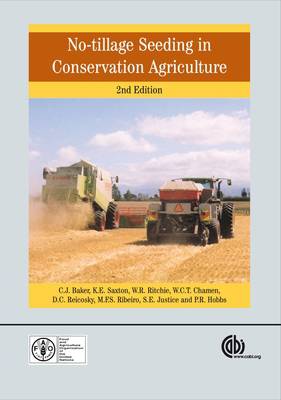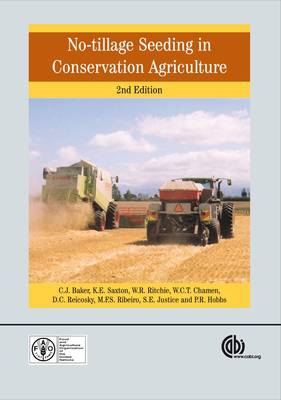
- Afhalen na 1 uur in een winkel met voorraad
- Gratis thuislevering in België vanaf € 30
- Ruim aanbod met 7 miljoen producten
- Afhalen na 1 uur in een winkel met voorraad
- Gratis thuislevering in België vanaf € 30
- Ruim aanbod met 7 miljoen producten
Zoeken
No Tillage Seeding in Conservation Agriculture
C Baker, Scott Justice, Keith Saxton, Peter Hobbs, William Ritchie, W Chamen, Don Reicosky, Fatima Ribeiro
Hardcover | Engels
€ 392,45
+ 784 punten
Omschrijving
This book is a much-expanded and updated edition of a previous volume, published in 1996 as "No-tillage Seeding: Science and Practice". The base objective remains to describe, in lay terms, a range of international experiments designed to examine the causes of successes and failures in no-tillage. The book summarizes the advantages and disadvantages of no tillage. It highlights the pros and cons of a range of features and options, without promoting any particular product.Topics added or covered in more detail in the second edition include: * soil carbon and how its retention or sequestration interacts with tillage and no-tillage* controlled traffic farming as an adjunct to no-tillage* comparison of the performance of generic no-tillage opener designs* the role of banding fertilizer in no-tillage* the economics of no-tillage* small-scale equipment used by poorer farmers* forage cropping by no-tillage* a method for risk assessment of different levels of machine sophistication
Specificaties
Betrokkenen
- Auteur(s):
- Uitgeverij:
Inhoud
- Aantal bladzijden:
- 352
- Taal:
- Engels
Eigenschappen
- Productcode (EAN):
- 9781845931162
- Verschijningsdatum:
- 30/11/2006
- Uitvoering:
- Hardcover
- Formaat:
- Ongenaaid / garenloos gebonden
- Afmetingen:
- 181 mm x 245 mm
- Gewicht:
- 934 g

Alleen bij Standaard Boekhandel
+ 784 punten op je klantenkaart van Standaard Boekhandel
Beoordelingen
We publiceren alleen reviews die voldoen aan de voorwaarden voor reviews. Bekijk onze voorwaarden voor reviews.








